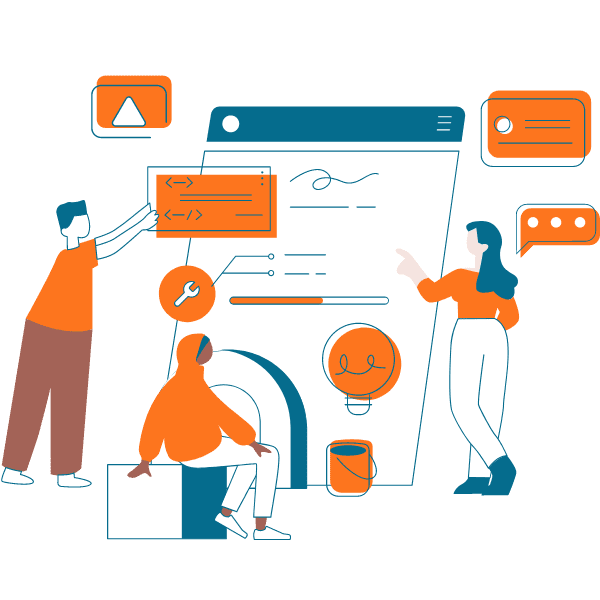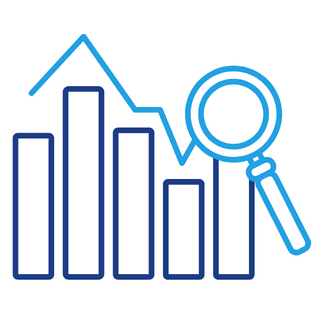Workforce management is kind of our area of expertise. It is a crucial element of running a successful business, regardless of what space you operate in. With workforce management, there are many HR challenges to overcome. Well, with workforce management, people analytics is a huge piece of the puzzle.
As with most business decisions, any data that can help business leaders make informed decisions is incredibly valuable. Consider the fast-changing and ever-evolving world of business. It’s clear to see why workforce planning and management is incredibly difficult.
Workforce Planning

We’ve previously gone into detail on workforce planning and how important it is for your business. Simply put, workforce planning is a strategy. Businesses deploy this strategy in order to get the right people, with the right skill set, in the right place at the right time. It can provide improved business outcomes.
Workforce planning includes analyzing the current workforce to determine future workforce needs. It also includes identifying the gap between the present and the future. We’re going to focus on the analytics part in this piece, taking a deeper dive into people analytics.
What is People Analytics?
People analytics or HR analytics is an important function of workforce management. According to Gartner – People analytics is collecting and applying talent data to improve critical talent and business outcomes. As a result, it enables HR leaders and business managers to make informed, data-driven decisions. These decisions affect talent, processes, and employee experience.
Types of People Analytics
There are three main categories of people analytics;
- Historical
- Predictive
- Prescribed
HISTORICAL PEOPLE ANALYTICS
As you might have guessed, historical analytics looks at past data. This data helps to quantify and describe changes in the workforce. Moreover, it can shed light on key metrics like revenue per FTE, employee turnover rate, levels of employee engagement, and headcount trends.
PREDICTIVE PEOPLE ANALYTICS
Predictive analytics is the direct opposite of historical. It looks into the future, focusing on business objectives. This can help identify skills, qualifications, resources, and headcount gaps. This allows business owners to be proactive rather than reactive in their workforce management styles.
PRESCRIBED PEOPLE ANALYTICS

Finally, prescribed analytics is a combination of both historical and predictive. Essentially, decision-makers use prescribed analytics to predict outcomes based on what’s happened in the past. Then, they can determine what the workforce needs in the short term for success. It allows them to make a very tailored, prescriptive workforce plan.
As you might imagine, data is the key factor in all of the above. As you look at your data sources, remember that the outcome should always be actionable. It is no good just carrying out people analytics. Presenting the data in a way that is digestible, actionable, and specific is key.
As you continue to analyze your data, your prescribed plan will change. The more new data you have, the more dramatic these changes can be. As you can imagine, this can make workforce management very difficult, particularly in the context of hiring high performers.
Benefits of People Analytics
People analytics has 3 well-established benefits for business.
TRANSPARENCY
Effective people analytics should be well distributed to create openness and transparency. The information and the plans developed should be shared with everyone from hiring managers down to lower-level executives who will be directly impacted by the decisions. As a result, this clear communication ensures everyone is on the same page regarding hiring, training, engagement, and general HR processes.
PLANNING
Of course, effective workforce planning is one of the main goals of people analytics. Once KPIs have been established, leaders clearly understand costs, trends, and overall performance. With this knowledge, they can make data-driven people decisions that will help the business stay profitable.
HR STRATEGY

Without people analytics, human resources is often a reactive business function. However, with the right data, HR data can pre-empt issues, focus on their unique company data and become strategic managers. This means they create improved processes and HR systems, tailored to their workforce needs. This helps them hire, train, and retain the right people with the right skillsets to maximize productivity and profitability.
Aside from these 3 main benefits, people analytics can also identify and solve other workforce management problems. It can help identify talent gaps, burnout, and high levels of attrition. Often, it involves employee engagement surveys, which are also a great resource in effective HR management. Identifying these items and working to improve the situation is an invaluable workforce management strategy.
How to get Started with People Analytics
Getting started with people analytics involves a structured approach to collecting, analyzing, and leveraging data to make more informed decisions about your business’s workforce. Here are steps to help your organization begin its journey into people analytics:
1. Define Your Objectives:
– Start by clarifying your goals and objectives for using people analytics. What specific problems or questions do you want to address? For example, you might aim to improve employee retention, enhance recruitment processes, or boost workforce productivity.
2. Build Leadership Support:
– Gain buy-in from senior leadership and key stakeholders. It’s crucial to have top-level support to allocate resources, including time, budget, and personnel, to develop and implement people analytics initiatives.
3. Assemble a Cross-Functional Team:
– Form a team that includes HR professionals, data analysts, data scientists, and IT experts. Collaborative efforts are essential for successful people analytics projects.
4. Data Collection:

– Identify the data sources you need. These may include HR databases, performance reviews, employee surveys, and external data like market benchmarks. Ensure data quality, accuracy, and compliance with privacy regulations (e.g., GDPR).
5. Choose Analytics Tools and Technologies:
– Select appropriate analytics tools and technologies. Consider whether you’ll build an in-house analytics team, use third-party tools, or combine both approaches. Popular tools include data visualization platforms, statistical software, and machine learning libraries. We will also look briefly at how Celayix can help you below.
6. Data Integration:
– Integrate data from various sources into a unified database or data warehouse. Data integration is crucial for performing comprehensive analyses.
7. Analyze and Explore Data:
– Start by conducting exploratory data analysis (EDA) to identify patterns, trends, and correlations in your data. Use descriptive and inferential statistics to gain insights into your workforce.
8. Define Key Metrics:
– Establish key performance indicators (KPIs) that align with your objectives. Examples include turnover rates, employee engagement scores, time-to-fill job vacancies, and workforce diversity metrics.
9. Develop Predictive Models:
– Use predictive analytics to forecast future workforce trends and outcomes. Machine learning techniques can help identify factors influencing employee turnover, absenteeism, or performance, allowing you to take proactive measures.
10. Visualization and Reporting:

– Create dashboards and reports to communicate insights effectively to decision-makers. Data visualization tools can help present complex findings in a clear and understandable manner.
11. Experiment and Iterate:
– Continuously experiment with different analytics approaches and refine your models and strategies based on the results. Iteration is essential for improving the accuracy and relevance of your insights.
12. Implement Actionable Insights:
– Use the insights gained from your analytics to make data-driven decisions. Implement strategies and interventions to address workforce issues or capitalize on opportunities identified through your analyses.
13. Monitor and Evaluate:
– Regularly monitor the impact of your actions and evaluate the success of your people analytics initiatives. Adjust your strategies as needed to achieve your organizational goals.
14. Maintain Data Privacy and Compliance:
– Ensure that you comply with data privacy and security regulations when handling employee data. Implement robust data governance practices and protect sensitive information.
15. Invest in Employee Training:

– Provide training and development opportunities for HR and other relevant staff to enhance their data analysis skills. This will empower your organization to harness the full potential of people analytics.
16. Communicate Findings:
– Foster a data-driven culture within your organization by communicating the value of people analytics to all stakeholders and encouraging data-driven decision-making at all levels.
Remember that the journey into people analytics is ongoing and evolving. As you gain experience and expertise, your organization can increasingly leverage data-driven insights to optimize workforce management and enhance overall business performance.
Data is Key
Without high quality data, there is essentially no people analytics. So, ensuring you have enough data to make informed decisions is critical for a data driven approach. One key event is not a “trend”. It shouldn’t be used in predictive analysis.
It is also crucial to look at the right data in the right context. Look at external factors such as recession, the job market, and worldwide events that impact the workforce. Your business data analytics in isolation might be skewed and put you on the wrong path.
Celayix provides managers with a user-friendly tool to get started with people analytics. We use advanced AI technology in our Scheduler to look at historical data, skill sets, and business rules. Therefore, managers can create a perfectly optimized schedule with the right people, with the right skills, in the right place at the right time. Employee scheduling is just one of the areas that benefit from effective people analytics, but is a great place to start. If you want to learn more, schedule a free live demo now!





